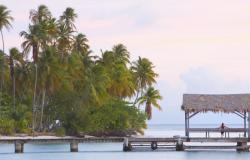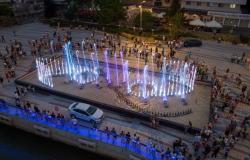The place in Romania that hides a real hidden treasure! Very few Romanians know the true potential of this special area. Here are the secrets of this region.
The Jiu Valley coal mines, a resource that changed the region
For a century and a half, the coal mines of Valea Jiului were the backbone of the economy of the mining towns of Hunedoara. However, the mining era seems to be coming to an end. Romania’s mining region hides other valuable natural resources besides its riches in “black gold”.
Located between mountains with heights exceeding 2,000 meters, Valea Jiului in Hunedoara gained its notoriety thanks to its huge coal deposits. They were massively exploited for almost 200 years. However, coal resources were not the only natural advantages of the Hunedoren region.
Around the middle of the 19th century, the first coal mining operations in Valea Jiului, Hunedoara, were inaugurated. This territory once housed huge deposits of coal, sometimes visible on the surface. Underground fires burned slowly, creating a dark and mysterious atmosphere.
Before coal mining developed, the region of the depression in the south of Hunedoara county, traversed by the Jiuri, appeared to travelers as an untamed territory.
Visitors to this region encountered several old villages with a small population, left in ruins in the summer by the families of shepherds who took their flocks to the mountains. They left the huts and stables on the peaks only when the snows began to destroy the meadows.
Coal extraction has completely reconfigured the fate of the villages in the Jiu Valley. The small settlements disappeared, and in their place appeared over time the six cities with specific mining (Petrila, Petroșani, Aninoasa, Vulcan, Lupeni and Uricani). These, during the heyday of communism, together housed over 150,000 inhabitants.
The decline of the mining industry began in the 1990s
In the post-1990 period, the collapse of the mining sector led to the reduction by a third of the number of inhabitants of Valea Jiului. Right now, about 100,000 people still call this place “home.”
In the immediate vicinity of the Hunedoren mining towns, kilometers of underground tunnels cross the coal basin that stretches over an area of almost 20,000 hectares. More than 20 layers of coal can be found in the depths of the Jiu Valley. They stretch from east to west, from one end of the depression to the other, some of them being impressively thick, reaching 50 meters.
The coal seams spread over a distance of up to 50 kilometers. In addition, they have impressive widths of up to ten kilometers in the eastern part of the Jiu Valley (in Petrila and Petroșani areas). They become, however, significantly narrower at the western end of the valley, after the town of Uricani.
Coal mining in Valea Jiului reached the peak of its development in the late 1980s, when, together with the related factories, it had more than 40,000 employees. Here, an annual production of over ten million tons of coal was made!
Subsequently, the mining industry began to decline. At the moment, only four mines in Valea Jiului are still working. However, they are in a gradual process of closure. They are located in Lonea, Petroșani – Livezeni, Vulcan and Lupeni.
Other natural resources present in the Jiului Valley
Despite the fact that the economy of the Jiului Valley was predominantly supported by coal resources, we must state that the “black gold” does not represent the only natural wealth of this Hunedoren region.
The Jiului Valley in Hunedoara is known for its natural riches. Since Antiquity, the Romans searched for native gold in the beds of mountain rivers in the Petrila Lonea region. Currently, the remains of ancient, Dacian and Roman settlements can be discovered near the towns of Petrila and Petroșani, in the area called Bănita.
“Insignificant traces of Roman mining can be seen at Jieț, near Petroșani, where the miners washed gold. Archaeological discoveries have shown that the Romans extended the exploitation of the gold alluvium also at the springs of Jiului”, according to the researcher Ioan Velica, in the book “Journeys through the Ages of the Jiului Valley”.
Gold and Quartz in the Jiului Valley
In the 19th century, gold was ardently sought in the slopes surrounding the mountain river valleys of the region. However, its mining was eventually replaced by more stable and profitable investments in large-scale coal mining.
“The great wealth of this coal field, which contains, as it would appear, excellent coal, cannot be overlooked. Also placed within a few miles of the remarkable iron ore deposits of Hunedoara and Telek, there is an additional reason for them to be developed. Gold is a speculation, where luck and chance are of more use than knowledge and industry.
Coal is a certainty and it is to be hoped that the Jiului Valley will soon present proof of the profitability of the industry, of the wealth of minerals”, we learn from the accounts of geologist David Ansted, in 1862, in the guidebook “A short trip to Hungary and Transylvania in 1862”.
During the communist era, a quarry in Valea Jiului was recognized as the place where the purest quartz in Europe was extracted, according to accounts from that time.
In the decades of the 80s and 90s, the quartz quarry in Uricani, located on the Șiglău mountain, was active, but later it was left for conservation. According to the testimonies of former employees, during the last years of the communist regime, a significant part of the monthly production of approximately 75 tons of quartz was intended for the beautification of the People’s House.
“75 tons of the best quality quartz became crystal for the decorations of the House of the Republic, while there was an acute shortage of optical glass or silicon. I’m not talking about the mine flowers, quartz found and recovered from the quarry, with which any museum would be proud – quartz that are part of the national heritage – they were simply taken by the big bosses from Bucharest. It’s stealing, instead of having them in a museum hall in the city”, according to engineer Ioan Toacsen.
The quartz processed in the quarry on Șiglăului Hill in Uricani was mainly used as a raw material for the Vitrometan glass factory in Mediaș. It was also sent to crystal, porcelain and enamel factories in Bistrița, Dorohoi, Cluj and Bucharest.
“The deposit in the Şiglău hill is very rich in silicon, which makes the preparation, despite the limited number of workers, a particularly important unit.
The quality of optical glass, quartz-based components for the electronic industry and Romanian crystals, which are well appreciated on the foreign market, largely depends on our work. We also deliver technical silicon to the metallurgical plant in Tulcea”, informed engineer Ioan Toacsen in 1990.





